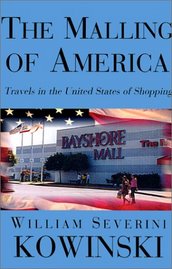Before the European and Euro-American invasion (known politely as "contact") the Native peoples of California were the most numerous in what would be called the United States, and in all of California, the largest Native populations were in the north.
Today California has more Native people than any other state, but many are no longer living where their cultures developed. In this North Coast region, several of the many more indigenous cultures that thrived here still survive. They each have a land base, a tribal government, and in recent decades have revived at least some of their ceremonies and traditions.
The Karuk, possibly the oldest culture in the area, lived in villages along sixty miles of the Klamath River, in territory now called the Siskiyou and Salmon Mountains, and on land now part of the Six Rivers and Klamath National Forests. The Karuk govern trust land that is separated into settlements on a few traditional village sites. The Karuk are the Upriver people.
Here are a few links:
Karuk Tribe
Institute of Native Knowledge
Magic River
language scholar
photos
The Yurok, the Downriver people, lived just below and to the southwest of the Karuk. Yurok territory once included some forty miles of the Klamath and some sixty miles of seacoast. Today the Yurok have the largest single tract of reservation land in California.
Yurok tribe
history
photo
language
Yurok Nation
The Hupa lived in an inland valley along the Trinity River south of the Karuk. Today the Hupa inhabit a self-contained reservation area in their valley.
Hoopa Valley
photo
language
The ancient hunting grounds of the Tolowa were to the northwest, above the watersheds of Bluff Creek. The Tolowa lived in as many as 18 villages along the Pacific coast and the Smith River.
Tolowa tribe
history and links
Wiyot lands once spanned a radius of forty square miles, centered at Humboldt Bay. They had many villages from the present McKinleyville (and perhaps farther north), south to Scotia and inland to Blue Lake.
Wiyot tribe at Table Bluff
Blue Lake and basketry
history
Several other tribes and bands lived on the North Coast but were essentially exterminated as cultures since contact. Partly as a result of the historically notorious slaughter of the majority of surviving Wiyot on one night in 1860, the Wiyot were in most imminent danger of dying out as a culture and a people. But today the Wiyot tribe is revitalized. (For much more on the Wiyot in history and today, please see the posts that follow.)
These tribes were always small, and developed separately according to exactly where in the landscape they were. Their languages not only differed one from another, but are classified in different linguistic groups. The Yurok and Wiyot speak an Algonquinian language, the Karuk speak a Hokan, and the Hupa an Athabascan language. "Here, within a circle whose radius is approximately six miles," writes Native scholar Jack Norton, "three of the six major linguistic groups recognized in North America came into contact."
And they did come into contact. They were remote, but not isolated. They traded with each other, and with other Native peoples. They shared ceremonies and stories. They are also related to other indigenous cultures in California, southern Oregon and the Pacific Northwest, and according to current standards of linguistic group classification, their languages link them to indigenous peoples of the northeastern United States, the Great Plains, Canada and the Yucatan.
Other links:
The Seventh Generation Fund
Original Voices
We Care
-
Media coverage of crowds in the larger American cities Saturday mostly had
the same estimate: *huge*. With smaller municipalities, the emphasis was
on ...
19 hours ago



1 comment:
Thank you for providing some initial information about Indian tribes of the North Coast. It should be mentioned, however, that the "Primer" confined itself entirely to tribes that still have an organized presence in the area. Historically, the region that is now Humboldt County was home to more than a dozen different tribes--the highest concentration of tribes found anywhere in the country--but many of these ceased to exist after suffering massacres and other oppression by the whites. In some cases we know little more than the names of these vanished tribes, and sometimes even this basic bit of information is subject to dispute. For now, here is a list of the "other" Humboldt Tribes, as best as can be determined: Whilkut (upper Redwood Creek), Chilula (sometimes grouped with Whilkut--middle and lower Redwood Creek), Tsnungwe (confluence of South Fork and main Trinity), Mawenok (Mad River above Blue Lake), Kittel (sometimes called Nongatl--Van Duzen River basin), Settenbiden (sometimes called Lassik--Fort Seward-Alderpoint area), Tsennahkennes (sometimes called Wailaki--Harris area), Tokubbe (sometimes called Shelter Cove Sinkyone--Garberville area), Tochobe (sometimes called Shelter Cove Sinkyone--Shelter Cove-Briceland area), Lolahnkok (sometimes called Lolahnkok Sinkyone--lower South Fork Eel), Mattole, Nekanni (sometimes called Bear River--Bear River area).
Post a Comment